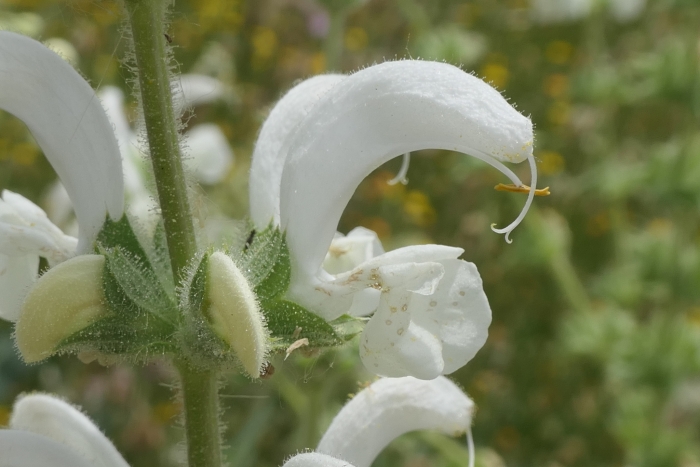Silver Sage
(Salvia argentea)
Silver Sage (Salvia argentea)
/
/

Rafael Medina
CC BY 4.0
Image By:
Rafael Medina
Recorded By:
Copyright:
CC BY 4.0
Copyright Notice:
Photo by: Rafael Medina | License Type: CC BY 4.0 | License URL: http://creativecommons.org/licenses/by/4.0/ | Rights Holder: Rafael Medina | Publisher: iNaturalist | Date Created: 2022-05-21T14:04:11-07:00 |

























Estimated Native Range
Summary
Salvia argentea, commonly known as Silver Sage, is a biennial or short-lived perennial herb native to the Mediterranean region, including southern Europe from Portugal to Bulgaria. It is typically found in rocky, open areas and scrublands where it thrives in well-drained soils. Silver Sage reaches a height of 18-24 inches (45-60 cm) and spreads up to 3 feet (90 cm) wide, primarily due to its large basal leaves. These leaves are notable for their woolly appearance, created by dense, silky hairs that also give the plant its silvery hue. The leaves can be quite large, sometimes reaching up to 3 feet in width.
Silver Sage is valued for its striking foliage, which adds a unique texture and color contrast to garden settings. It is often used in xeriscaping, rock gardens, and as a specimen plant in borders due to its drought tolerance and low maintenance requirements. While the white flowers that appear on tall stalks in spring or summer are relatively inconspicuous, the foliage remains a focal point throughout the growing season. The plant has earned the Royal Horticultural Society’s Award of Garden Merit, indicating its exceptional performance in gardens. For best results, Silver Sage should be planted in full sun and requires well-drained soil to prevent root rot. It is hardy to -15°C but may succumb to winter wetness and freezing temperatures, which can shorten its lifespan.CC BY-SA 4.0
Silver Sage is valued for its striking foliage, which adds a unique texture and color contrast to garden settings. It is often used in xeriscaping, rock gardens, and as a specimen plant in borders due to its drought tolerance and low maintenance requirements. While the white flowers that appear on tall stalks in spring or summer are relatively inconspicuous, the foliage remains a focal point throughout the growing season. The plant has earned the Royal Horticultural Society’s Award of Garden Merit, indicating its exceptional performance in gardens. For best results, Silver Sage should be planted in full sun and requires well-drained soil to prevent root rot. It is hardy to -15°C but may succumb to winter wetness and freezing temperatures, which can shorten its lifespan.CC BY-SA 4.0
Plant Description
- Plant Type: Herb
- Height: 0.5-1 feet
- Width: 0.5-1.5 feet
- Growth Rate: Moderate
- Flower Color: Pink, White
- Flowering Season: Summer
- Leaf Retention: Semi-deciduous
Growth Requirements
- Sun: Full Sun, Part Shade
- Water: Low, Medium
- Drainage: Fast, Medium
Common Uses
Border Plant, Drought Tolerant, Low Maintenance, Rock Garden, Showy Flowers
Natural Habitat
Mediterranean region, including rocky, open areas and scrublands
Other Names
Common Names: Silver Clary
Scientific Names: Salvia argentea , Salvia alpestris , Salvia alpestris , Salvia argentea subsp. patula , Salvia argentea var. aurasiaca , Salvia argentea var. fontanesiana , Salvia argentea var. gussonei , Salvia argentea var. gussonei , Salvia argentea var. mesatlantica , Salvia argentea var. patula
GBIF Accepted Name: